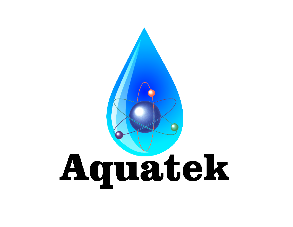Why are high nitrate or nitrogen concentrations in water a problem
Q:
Why are high nitrate or nitrogen concentrations in water a problem, and what can be done to maintain safe levels?
A:
Nitrate (NO3) is a common inorganic form of nitrogen. Chemically, it
is an anion with a single negative charge, consisting of one atom of
nitrogen and three atoms of oxygen. Because it is an anion, it is
soluble in water. Plants normally use nitrate as their source of the
nitrogen needed by all living things, and so nitrate is considered a
nutrient for plants. Excessive concentrations of nitrate in lakes and
streams greater than about 5 milligrams per liter (measured as
nitrogen), depending on the water body, can cause excessive growth of
algae and other plants, leading to accelerated eutrophication or "aging"
of lakes, and occasional loss of dissolved oxygen. Animals and humans
cannot use inorganic forms of nitrogen, so nitrate is not a nutrient for
us. If nitrate-nitrogen exceeds 10 milligrams per liter in drinking
water, it can cause a condition called methemoglobinemia or "blue baby
syndrome" in infants. Some recent studies have indicated a possible
connection between elevated nitrate concentrations and cancer.
Nitrate
can get into water directly as the result of runoff of fertilizers
containing nitrate. Some nitrate enters water from the atmosphere, which
carries nitrogen-containing compounds derived from automobiles and
other sources. Nitrate can also be formed in water bodies through the
oxidation of other, more reduced forms of nitrogen, including nitrite,
ammonia, and organic nitrogen compounds such as amino acids. Ammonia and
organic nitrogen can enter water through sewage effluent and runoff
from land where manure has been applied or stored.
Water-quality
regulatory agencies seek to avoid high concentrations of nitrate in
water to minimize both of the problems noted above. Nitrate standards
take two forms: drinking-water standards, designed to prevent adverse
human-health effects, and ambient-water standards, designed to prevent
excessive eutrophication in lakes and streams. Drinking-water standards
for nitrate have been around since at least 1974, when the Safe Drinking
Water Act was passed, and probably well before. States may set their
own drinking-water standard for nitrate, but most or all use the EPA
standard of 10 milligrams per liter (measured as nitrogen).
Ambient-water standards have also been around for years, but each State
has decided on what standards to use, if any. The EPA is just now
setting guidelines for determination of ambient nitrate standards for
different water bodies in different regions.
General information of
EPA's programs for water-quality standards and criteria is available at:
Keeping
drinking water free of excessive concentrations of nitrate involves a
multiple-barrier approach. The most effective strategy is
prevention--keeping chemicals that contain or can generate nitrate out
of the water. This means managing agricultural operations to minimize
application of fertilizer and to minimize runoff of fertilizer that is
applied. Some farmers are now using computerized maps of their fields,
calibrated to the specific soil and water conditions in various parts of
their fields, to restrict the application of fertilizer to only what is
needed for each part of the field. In some countries, for example
Switzerland, drinking-water providers enter into contracts with farmers
in their source areas in which farmers receive subsidies to eliminate
fertilizers and use organic farming methods. Prevention also means
proper handling of manure and animal waste lagoons, to minimize the
discharge of animal waste or waste runoff to streams. Nitrate
contributions from other sources can also be curtailed, for example by
adding tertiary treatment, or by nutrient removal, to sewage treatment
plants, and by controlling emissions from automobiles.
In addition
to prevention, drinking-water providers may use advanced treatment
techniques to remove nitrate from water. For example, advanced
ion-exchange technology to remove excess nitrate and remain below the 10
mg/L standard. In a typical year, this is needed mostly during the
spring, following spring runoff after the application of fertilizer.
A good article about the occurrence of methemoglobinemia can be found at:
